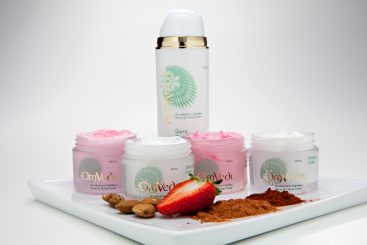Anti-aging properties of Ayurvedic Skin Care
Vayasthapana means maintaining youthfulness or arresting age. Vayasthapana herbs give support to the skin by balancing the skin, example, Centella Asiatica (brahmi, Indian pennywort) is rich in amino acids, beta carotene, fatty acids, and numerous potent phytochemicals. Extracts have been found to calm inflammation, speed wound healing, stimulate new cell growth, build collagen, and improve circulation. One of its many properties is to enhance collagen synthesis.
Varnya means to brighten skin glow. – Varnya herbs have the ability to enhance the radiance or brighten skin. Tyrosinase inhibition, is the most commonly reported method of skin lightening and brigtening. Dull skin is not considered youthful from an ayurvedic perspective. Varnya herbs include sandalwood, vetiver, Indian madder and Indian sarsaparilla to name a few.
Kantivardhaka promotes lustre, Sandhaniya (cell-regeneration), Vranaropana (deep healing) – red sandalwood and brahmi, Tvachya (nurturing) Gotu Kola, Silk Cotton Tree, Costus and Rose Petal are the most widely used, Shothahara (anti-inflammatory), Tvachagnivardhani (strengthening skin metabolism) and Tvagrasayana (retarding aging) herbs that are considered beneficial for skin health.
Feeding the skin properly is very important to prevent it aging.
Ayurveda described Skin (twak) in seven layers (As per Acharya Susruta). The outermost layer is called Avabhasini, reflects the complexion and the quality of the Rasa Dhatu (nutrient fluid, the first of the seven tissues of the body). It also acts as a mirror as it indicates whether the physiology as a whole is balanced or imbalanced, and whether there is inner health or disorder; it also reflects the aura of the individual. Mamsadhara is the innermost layer is the platform for the skin’s stability and firmness. When this layer is in balance, the skin looks young and supple.
According to Ayurveda, many factors decide skin health – three important body tissues that reflect our skin health– plasma (Rasa), blood Rakta and muscle (Mamsa). Plasma keeps the skin healthy, Blood helps in detoxification process along with the liver, while muscles provide firmness to the skin. An effective skin-care herbs should provide support to all these three areas.
A few herbs that are known for their benefits in various skin conditions are aloe vera, neem, Yashti madhu (Glycyrriza glabra), Liquorice, turmeric
Anti-inflammatory (Shothahara) – protects the skin against allergens, inflammatory subtances, chemicals and stress. External environmental factors can cause inflammatory skin conditions. Inflammatory skin is considered a prime cause of aging – it forms a micro-scar that over time develops into a wrinkle or blemish. Inflammatory mediators such as leukotrienes and prostaglandins, cytokines and growth factors target skin texture, integrity and tone. The skin should be protected from the sun. Rose petal, Aloe Vera, Gum resin exudates of Boswellia serrata (indian frankincense), Silver Bhasam are anti inflammatory herbs have been used in the Ayurvedic to manage several inflammatory conditions.
Tvagrasayana means literally ‘skin rasayana’, which refers to refined and powerful formulations to prevent aging of the skin. Phyllanthus emblica (amalaki), a potent antioxidant, rich in Vitamin C, tannins and gallic acid, is foremost amongst the rasayana herbs, it has properties like ajara (usefulness in aging), ayushprada (prolongs cell life), sandhaniya (improves cell migration and cell binding) and kantikara (improves complexion)
What you use on your skin is as important as what you eat. Our aim is to provide you with skincare – “from the earth to your skin as is food for your body”

Understanding anti aging from an ayurvedic perspective
